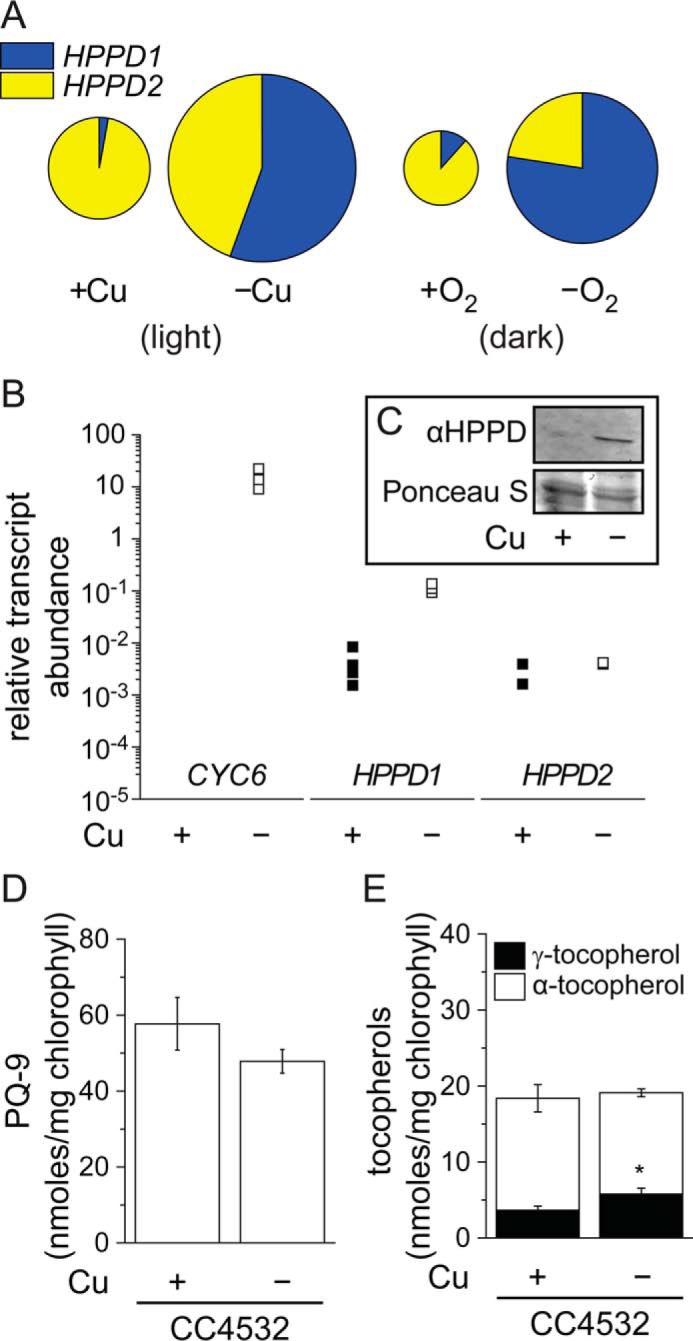FIGURE 9.

HPPD accumulation correlates with HPPD1 abundance and increased γ-tocopherol in copper-deficient Chlamydomonas. A–D, change in HPPD-encoding transcripts in response to growth in copper-deficient medium or dark anoxic conditions. A, data from RNA-seq experiments in Chlamydomonas strain CC4532. The sizes of the circles are proportional to the relative abundance (RPKM) of the total HPPD transcript pool in each condition. B, abundance of CYC6, HPPD1, and HPPD2 transcripts was also estimated in independent samples by qRT-PCR. CC4532 was grown in TAP medium in the condition indicated: −Cu(II) (black squares) or +Cu(II) (white squares). Cells were collected after reaching a density of 5–8 × 106 cells/ml and analyzed for RNA abundance by real-time PCR. Each symbol represents an independent experiment analyzed in technical duplicates. C, proteins were extracted from copper-depleted or copper-replet conditions and 10 μg of soluble protein was separated by 10% PAGE, followed by immuno-detection with an antibody against Arabidopsis HPPD. D, plastoquinone, and E, α- and γ-tocopherol contents were measured in extracts of Chlamydomonas cells. Data are the averages of three experimental replicates ± S.D.
